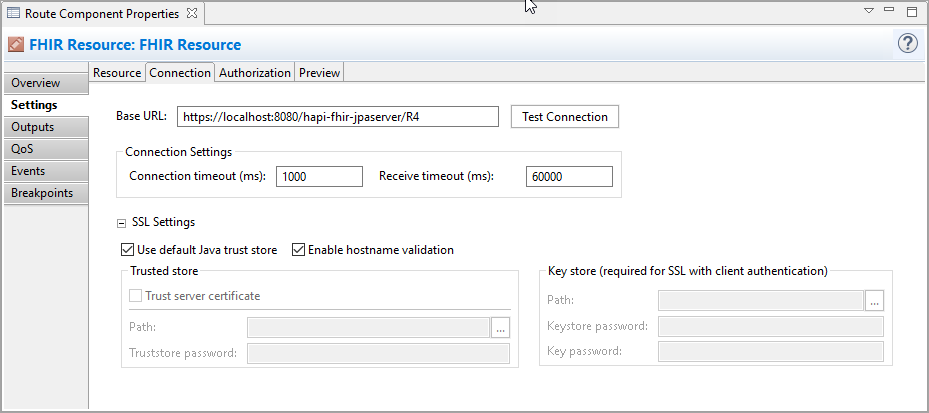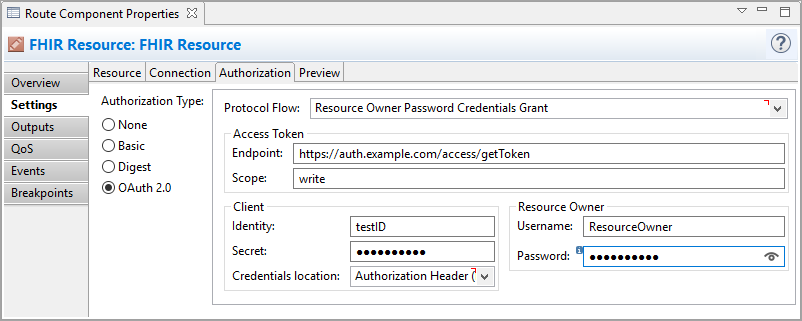|
|||||||||||||||||||||||||||||||||||||||||||||||||||||||
Generic SettingsAll the FHIR components have the following common settings located on the component's Settings tab:
ConnectionOn this tab, you can specify component-level connection settings to connect to a FHIR server without using the XEServer FHIR service as a connectivity bridge. These settings are available if the Use connection settings from component option is selected.
AuthorizationOn this tab, you can specify how the target FHIR server should authorize the XEServer's connection. These settings are available if the Use connection settings from component option is selected. The following options are available:
PreviewThis tab displays a pre-built request to be sent including all the parameters you have specified. |
|||||||||||||||||||||||||||||||||||||||||||||||||||||||





